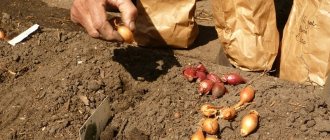Most often, replanting blackberries is associated with a new layout of the site, but there are other reasons. Regardless of what caused the need for this procedure, it should be approached competently, taking into account the needs of a particular culture. The correct choice of time for transplantation, a new location, as well as compliance with recommendations regarding the preparation of the site and the plant itself guarantee the success of the entire event. This article will talk about how to choose the right site for replanting blackberries, how to properly replant the bushes and how to care for them in the future.
Why is it necessary to transplant blackberries to a new location in autumn and spring?
In the wild, the period of growth of blackberry bushes in one place varies in duration and can last about 30 years. Garden blackberries must be replanted to a new place every 10 years in order to rejuvenate the plant, and at the same time propagate it by divisions.
It is also recommended to replant bushes that are too thick and overgrown, which can be divided along the way. Also, replanting blackberries may be associated with changing the layout of the garden plot.
Be that as it may, replanting blackberries in the fall or spring to a new location involves following a certain algorithm, which includes removing the bush along with its roots from the ground, pruning all shoots and moving it to a new planting hole along with a lump of earth. In this case, it is important to plant the bush in such a way that its root collar remains at the same level as after the previous planting.
When can you replant blackberries to another place?
Transplantation can begin in early spring before sap flow or in autumn, when the fruits have already been harvested. Most gardeners recommend doing this in the fall. The fact is that in early spring the soil is most often frozen, and replanting is simply technically difficult. But autumn transplantation is ideal for central and southern Russia, where there are no early frosts and frosts in winter are moderate.
Is it possible to replant blackberries in the spring?
In the spring, mostly thornless varieties of blackberries are replanted - they have “indications” for this. Or in regions where early spring is warm and the soil is ready for replanting.
Is it possible to replant blackberries in summer?
There are disputes between specialists regarding the summer transplant. It is believed that any plant can be replanted all year round. But if the variety is beloved and rare, then it’s better not to risk it. If you want to try, you need to follow the recommendations:
- The transplant should be carried out early in the morning or after sunset, when there is no longer sun. Or in cloudy weather.
- Seedlings should not be left in the sun - they will quickly wither. It is necessary to dig up and plant immediately.
- After transplanting, you need to create artificial shade for the blackberries (pull an awning, for example).
- The first week will require abundant watering.
Transplanting blackberries in autumn
In the fall, it is worth replanting blackberries to a new place in those regions where there is a warm, long autumn and light frosts. In the fall, you can transplant not only adult bushes, but also young shoots - offspring from the mother bush. The task is simplified by the fact that over the summer a lot of such shoots will grow, they will get stronger and by the fall they will be ready for planting. This is also why autumn is considered the ideal time for replanting.
Cuttings are prepared from lignified shoots, cutting them off during autumn pruning.
Autumn shoots are much stronger and easier to adapt.
Transplanting blackberries in autumn and spring: advantages and disadvantages
Throughout the year, blackberries can be replanted during the spring and fall months. Moreover, the choice of time of year depends on the climatic characteristics of a particular region. Both spring and autumn replanting of blackberries have a number of advantages and disadvantages.
Blackberry seedlings planted in the spring They have enough time to take root and get stronger before the onset of winter. This option is recommended for the north of the country, where winter cold comes early.
At the same time , spring transplantation in the spring also has a significant drawback: it is quite difficult to determine the exact time suitable for transplanting blackberries. It is necessary to choose a moment when the ground is already sufficiently thawed, but the movement of juices in the plant tissues has not yet begun.
When choosing a spring planting option, you should keep in mind that excess fertilizer in the planting hole can injure the root system of a bush weakened as a result of moving.
Autumn replanting of blackberries is ideal for gardeners in the south. In regions with a long warm part of the year, blackberry bushes have time to receive the necessary amount of nutrients and sunlight during the summer and become stronger for successful adaptation in a new place.
Seedlings transplanted at the beginning of autumn have time to take root before the onset of frost and can safely survive the winter. It is recommended to transplant blackberries in autumn no later than 60 days before the expected arrival of winter cold. In this case, it is necessary to provide the seedlings with reliable shelter for the winter, even if we are talking about frost-resistant blackberry varieties.
Timing for transplanting blackberries
Choosing the exact time to transplant blackberries is not an easy task. It is especially important not to make a mistake with the choice of date in the case of spring planting of seedlings. Since in the northern regions the arrival of spring warmth often does not coincide with calendar dates, experienced gardeners prefer to navigate by the weather.
Most often, the favorable time to transplant blackberries is in April. At this time, the earth is no longer frozen, and sap flow in the tissues of the plant has not yet begun. In May it is too late to replant blackberry bushes - a phase of rapid growth and shoot development begins.
It is easier to choose the time for autumn replanting of blackberries - in the southern regions it falls on the last days of September and the beginning of October. It is important that there are at least 2 months left before the expected frost. Therefore, when choosing the time to transplant blackberry bushes, many gardeners are guided by weather forecasters.
Preparing to transplant blackberries
The procedure for transplanting blackberry bushes is quite labor-intensive and includes two stages. The first stage is preparatory. It involves a number of steps that are the same for all types and varieties of blackberries.
Site selection criteria
The first step in the process of preparatory work for transplanting blackberries is the correct selection of the site. The selection criteria do not depend on whether it is planned to transplant an adult blackberry or plant a young seedling.
Light-loving blackberries prefer well-lit areas sheltered from the north wind. The ideal choice would be a small hill on which the blackberry bush will be reliably protected from flooding during periods of heavy rainfall or flooding. At the same time, to plant blackberries, you need to dig a hole, which will allow you to retain water longer after watering.
As for the composition of the soil, it is optimal to place blackberry bushes on loamy or sandy loam soils. It should be borne in mind that transplanting blackberries into beds left behind by nightshades and berry bushes is not recommended.
Tillage
An important point in the preparatory work is treating the soil before planting blackberries in it. It includes several important steps:
- Determining the acidity of the soil in the area selected for blackberries and, if necessary, correcting it to the required pH level. You can make the soil less acidic by adding iron sulfate to it in a proportion of 0.5 kg per 10 square meters. In the absence of ferrous sulfate, 0.3 kg of sulfur can be used for the same area, but the required effect will be achieved later. You can increase the acidity of the soil using lime.
- Digging up the area to a depth of about half a meter and removing remnants of the root systems of weeds.
- Compost is distributed over the entire surface of the soil with a layer thickness of about 10 cm, and on top of it another 3 cm of crushed organic fertilizers. It is also recommended to apply complex mineral fertilizers rich in phosphorus, calcium and magnesium.
- Repeated digging of all nutrient layers and soil.
- Water the area abundantly with water and then mulch it with a layer thickness of about 8 cm. This procedure will allow the organic matter added to the soil to rot faster.
- A support structure, such as a trellis, is installed near the site where the blackberry bushes are supposed to be planted.
Planting material
Preparation of planting material is another necessary step in the general algorithm for replanting blackberries. The bush must be carefully removed from the soil along with the earthen lump. For this purpose, a thorough digging is carried out using a shovel. Together with a lump of earth, the blackberry bush is transferred to a new place.
Before planting, remove all above-ground shoots and branches. Moreover, they need to be cut at the root, without leaving stumps in which harmful insects can settle.
In cases where an adult and heavily grown blackberry bush is replanted, it can be divided into smaller bushes. Blackberries can be propagated in this way, however, this does not apply to very old plants - they cannot be divided.
To divide a blackberry bush, immediately after removing it from the soil, soften the earthen lump and clean the root system of the plant from the soil. The division of the bush is carried out with a sharply sharpened knife: each division must contain at least 2 or three branches, as well as at least one root bud. After division, new blackberry bushes can be planted individually in pre-prepared holes. The best time to divide blackberry bushes is spring or early autumn, so this procedure is often carried out along with replanting.
In addition to propagating blackberries by divisions, propagation by layering is also practiced during blackberry transplantation . In this case, seedlings obtained from the root shoots are separated from the mother bush and moved to a new location.
Caring for blackberries after planting
Immediately after planting the blackberry bushes, a long stage of caring for them begins, based on timely watering and fertilizing the plants, with periodic loosening of the soil in the tree trunk area.
Watering
Considering the deep location of the root system of blackberries, we can talk about the high drought resistance of the crop, but this does not mean that the shrub does not need watering. Moisture is especially important during the formation and ripening of fruits, otherwise they will be small and less sweet.
Check out Proper spring care of blackberries for a large harvest
The regularity of watering depends on weather conditions and the amount of natural precipitation.
Loosening of the soil in the tree trunk zone is carried out 1-2 times during the entire growing season, shortly after the next moistening of the substrate.
The depth of its fluffing is no more than 10 cm to prevent damage to the rhizome of the crop. In parallel with loosening the soil, you can remove weeds by removing them along with the roots.
Top dressing
In the first year after planting a young plant, you don’t have to worry about fertilizing the plantings, planning this event for the next year. Every spring, blackberry bushes need nitrogen-containing substances, which perfectly stimulate the growth and development of annual shoots.
Ammonium nitrate is perfect for the role of such a fertilizer, 50 g of which is planted to a depth of 10–15 cm (the specified amount will be enough for one plant).
Once every 3-4 years, the bush is fed with a mixture of organic and mineral substances, adding 10 kg of compost (or humus), 100 g of superphosphate, 30 g of potassium sulfate per 1 m². It is advisable to feed the bushes with the resulting mixture in the fall, after harvesting.
Sometimes blackberry fertilizer is combined with spraying the plants with a one percent solution of Bordeaux mixture, which suppresses the development of harmful microorganisms. For greater effectiveness of the procedure, it is recommended to immediately remove fallen leaves and other plant debris from under the bushes.
Also learn how to replant blackberries in spring.
When caring for blackberries, their preparation for the winter season deserves special attention. In the middle zone and northern regions of Russia with harsh winters, plant shoots are removed from their supports and bent to the ground.
The branches are sprinkled with a layer of snow on top or covered with a special insulating material (agrofibre). With the arrival of spring, the bushes are opened and tied back to the support; the main thing is to complete this procedure before the buds swell.
Transplanting blackberries in spring
Actually transplanting blackberries in the spring includes the following steps:
- The area intended for placing blackberry bushes should be planned in advance. The traditional arrangement of blackberries is in rows, the distance between which depends on the type of blackberry and its ability to grow. On average, it fluctuates between 180 and 300 cm. The interval between individual bushes should also be quite large: erect varieties need a gap of at least 200 cm, creeping varieties - about 300 cm.
- When digging planting holes, you should focus on the size of the root system of the seedling. For cuttings obtained from root shoots, a depth of up to half a meter will be sufficient. Mature bushes need a larger, more extensive hole into which their developed root system will be placed. It is recommended to plant blackberry bushes in recesses in the form of trenches dug the entire length of the rows. Their average depth is 50 cm.
- A nutrient mixture that includes organic components - for example, compost (1 bucket) - should be added to each planting hole. Another option is to fertilize the soil with the addition of mineral complexes (0.1 kg per hole).
- The blackberry bush to be transplanted is dug up from all sides, removed from the soil and, together with a lump of earth, transferred to the planting hole. In cases where the plant has a root that goes deep into the ground, it can be cut off with a shovel - it is almost impossible to extract such powerful roots.
- After placing it in the planting hole, the root system of the bush is covered with earth, then the area is watered abundantly with water. The surface of the soil is covered with a layer of mulch. It is necessary to keep the soil in the area with blackberries constantly moist until the seedlings finally take root.
Caring for blackberries after transplantation
The main thing in caring for blackberries is choosing the right place for planting, watering and timely feeding of the bushes. The plant should be planted in a place where the soil under the bushes will warm up and there will be no stagnation of water.
In spring, stagnation of water near the roots can lead to rotting of the plant. The soil under the bushes must be kept loose.
When caring for blackberry bushes, you must follow the following recommendations:
- carry out gartering and pruning of bushes.
- Since blackberries are not winter-hardy plants, the shoots are covered for the winter. To do this, they are bent to the ground and sprinkled with leaves.
- To combat gall mites in the fall, diseased branches are cut off and the bush is sprayed with garlic infusion.
- on hot summer days it is recommended to spray the bushes with water in the evening. This helps young shoots get stronger before winter.
- In the spring, at the beginning of budding of shoots, fertilizing with potassium fertilizers is carried out.
Blackberry is a plant with medicinal properties. The fruits contain niacin, vitamins and minerals. Acts as an antipyretic. For medicinal purposes, blackberries are used fresh, as jam and as tea. Berries and young leaves are used.
In today's article we will look at when and how to replant blackberries, how to prepare the soil in the spring? If the topic is relevant to you, then continue reading.
Raspberries and blackberries are like cousins—sharing a common ancestry but differing significantly. Blackberries are a wild berry that is now cultivated. It has unusual fruits, but the taste is pleasant and sour. The berries are very juicy - in any form: processed or fresh. Blackberry jelly, jam, syrup, liqueur, wine, compote - these are just a few recipes that can be prepared from blackberries. The berry is not fussy when planted - it quickly recovers, thanks to its powerful root system, it can survive in drought. Blackberries are usually replanted in spring or autumn - the season is your choice and for different climatic conditions.
When to replant blackberries in the spring: before buds open. Fruiting in late spring and summer is an unfavorable time for transplanting. Try to complete all procedures by the beginning of May. There are varieties that are replanted exclusively in the spring - these are thornless. Their root systems cannot boast of stability, so they quickly break down. In the fall, the berry may not have time to recover before the onset of frost. You need to move thornless blackberries with a lump of earth entangling the root system.
Methods for transplanting blackberries in spring:
- Root shoots;
- Dividing the bush;
Since it is important to plant blackberries on loose, drainable soil, cleared of weeds, it should be prepared when there is no threat of night frosts, the earth has warmed up at least a little and the air temperature has reached the positive mark. Both root shoots and divided bushes are planted at a distance of 10-15 cm from each other
First you need to form holes 30 cm deep, into which you put fertilizer (compost or old manure + soil), cover it with soil so that the roots do not touch, and only then deepen the blackberries.
To transplant more than 5-10 blackberry shoots or cuttings, you do not need to form holes, but dig a trench also 30 cm deep. Similar to the first method, pour fertilizer mixed with soil onto the bottom, then 1-2 cm layer of soil, then lay the root shoots or cuttings of blackberries, and dig in with soil. The cuttings are laid so that the topmost bud protrudes 2 cm from the ground. If there are roots, they need to be carefully leveled and placed horizontally on the ground. Be sure to compact the soil mixture on top and slightly moisten the planting site.
Blackberries grow quickly and can even move into areas not previously allocated to them, so you need to make low fences so that the plant does not crawl. It is advisable that they do not allow light to pass through, then the blackberries will not be drawn in that direction. Also limit proximity to garden crops or other berries. Blackberries on the site are, of course, not a weed that you should be afraid of and try to get rid of, but a very active plant, having prevented all development paths, which we will form the garden according to our original plan.
Autumn replanting of blackberries
You can start replanting blackberry bushes in the fall after harvesting, at least 60 days before the predicted frosts. This time is enough for the plant to adapt to new conditions and survive the winter safely. In general, autumn transplantation is no different from spring transplantation and includes the same steps.
The main feature of the autumn procedure is the need to take care of covering the plants for the winter. For this purpose, the trunk diameter of each blackberry bush must be covered with a mulch layer. Shortly before the arrival of winter, it is recommended to build an additional shelter from spruce or pine spruce branches, or using non-woven materials.
Autumn replanting is suitable for replanting cuttings obtained from the basal shoots of blackberries. This will allow you not to disturb the old bushes once again, and at the same time preserve its varietal qualities by planting offspring. This method is not suitable for propagating creeping blackberries, which do not form basal shoots. In this case, the layering method is used.
Even in the last month of summer, the shoots of blackberry bushes need to be buried, leaving the tops on the surface. By the time of transplantation, they will begin to form independent roots - they can be separated from the mother plant and transplanted to a new place.
How to replant blackberries
The method of transplanting to a new location depends on the variety:
- Creeping blackberries are planted in several ways: the mother bush is divided, seedlings are grown from offshoots (this variety has practically no root shoots);
- upright varieties of blackberries are planted by dividing the mother bush, cuttings, or “growing up” shoots from the roots.
It is important to form a blackberry bush correctly and divide the shoots; this is what determines the quality of its fruiting and growth.
Selecting a landing site
The place for transplanting blackberries must meet 2 criteria:
- the earth should warm up, but be protected from the wind;
- the land must be well drained, avoiding stagnation of water.
If water stagnates under the blackberries in the spring, the roots will rot. Therefore, the soil also needs to be loosened.
An ideal site would be along a fence or hedge on a hill facing southwest or south. The elevation will protect against stagnation of water, and the fence will protect from the wind.
Land preparation
Blackberries grow best on acidic soils - loam or sandy loam with the addition of humus and peat. Such land will be quite loose and fertile. It’s good if legumes or grain crops grew in the new place before the blackberries.
Before replanting, the soil needs to be dug up and it is advisable to spill it with a disinfecting solution to remove fungal spores. This can be a saline solution, a solution of manganese or copper sulfate. This kind of watering is troublesome, but it will protect the blackberries from fungal diseases and parasites.
Seedling preparation
Half of the work is to properly prepare the seedlings. There are 4 techniques in total that can be used to obtain new cuttings for planting:
- Apical branches. The tip of the annual shoot needs to be pressed into the ground, sprinkled with soil, and then watered periodically. After 2 months, new shoots will emerge from the shoot stuck into the ground. This means that the roots have formed, the apical branch has become a new bush that can be cut off and replanted.
How to transplant correctly
- The bush should move to a new place with a lump of “native” soil, which will protect the delicate brittle roots. Then the blackberries will take root more easily and will be protected from freezing.
- In the spring they are replanted until May, in the fall - before frost.
- The distance between bushes of erect blackberries is 1.5-2 m, for creeping ones - 2-3 m. Between rows - 2-2.5 m.
- The hole/furrow for replanting is up to 50 cm deep and wide - the size of the rhizome with a piece of soil.
- Blackberry roots should not be placed close to the fertilizer: the fertilizer must be mixed with the soil.
- Dig a furrow/hole 50 cm deep.
- Add humus/compost - 1 bucket, mineral fertilizer - 100 g per bush and mix with soil.
- They dig up a bush; to do this, you need to loosen the soil around it and dig up the roots little by little from four sides. Remove carefully, without shaking the roots from the ground. If the main root is very long, and it is not possible to dig out some part, then you can simply chop it off.
- The bushes with soil are laid out horizontally in a new place - in a trench or hole.
- The top is covered with soil up to 8 cm thick and mulched with sawdust and hay.
Experience of transplanting thornless blackberries:
Summer replanting of blackberries - pros and cons
Transplanting blackberries in the summer does not give high survival rates of seedlings, since in hot weather the bushes dug out of the ground quickly wither and die. In order for this event to be successful, the following recommendations must be followed:
- Planting should be carried out in the morning or evening hours, before dawn or after sunset.
- The transplant should be carried out as quickly as possible and immediately after it, a shelter from the sun should be built.
- Transplanted bushes need to be watered frequently and abundantly with water - at least once a day.
Replanting a blackberry bush: further care
Transplanted blackberry bushes do not require special care - caring for them comes down to procedures familiar to any gardener. During the first time after transplantation, watering should be frequent and plentiful.
before applying fertilizers - they can harm the weakened root system of plants, which is likely to receive a chemical burn. Only after the seedlings are fully strengthened can organic fertilizers be applied.
Otherwise, caring for transplanted blackberry bushes comes down to the following procedures :
- In spring and autumn, are pruned and bushes are formed, as well as the placement of lashes on trellises. In preparation for winter, the shoots are removed from the supporting structures, laid on the ground and covered with a layer of spruce branches or non-woven material.
- In summer, there is a high risk of gall mites attacking blackberries. You can get rid of pests by treating the bushes with insecticides or garlic infusion.
- Towards the end of summer, when the intense heat has passed, hardening procedures can be carried out. For this purpose, in the evenings the blackberry bushes are irrigated with slightly cool water.
- Next season, the transplanted blackberry bushes can be fed with mixtures containing potassium. Fertilizing is carried out in the spring, when the first buds appear.
Following simple recommendations will provide the transplanted blackberry bushes with the care necessary for rapid rooting in a new location.











